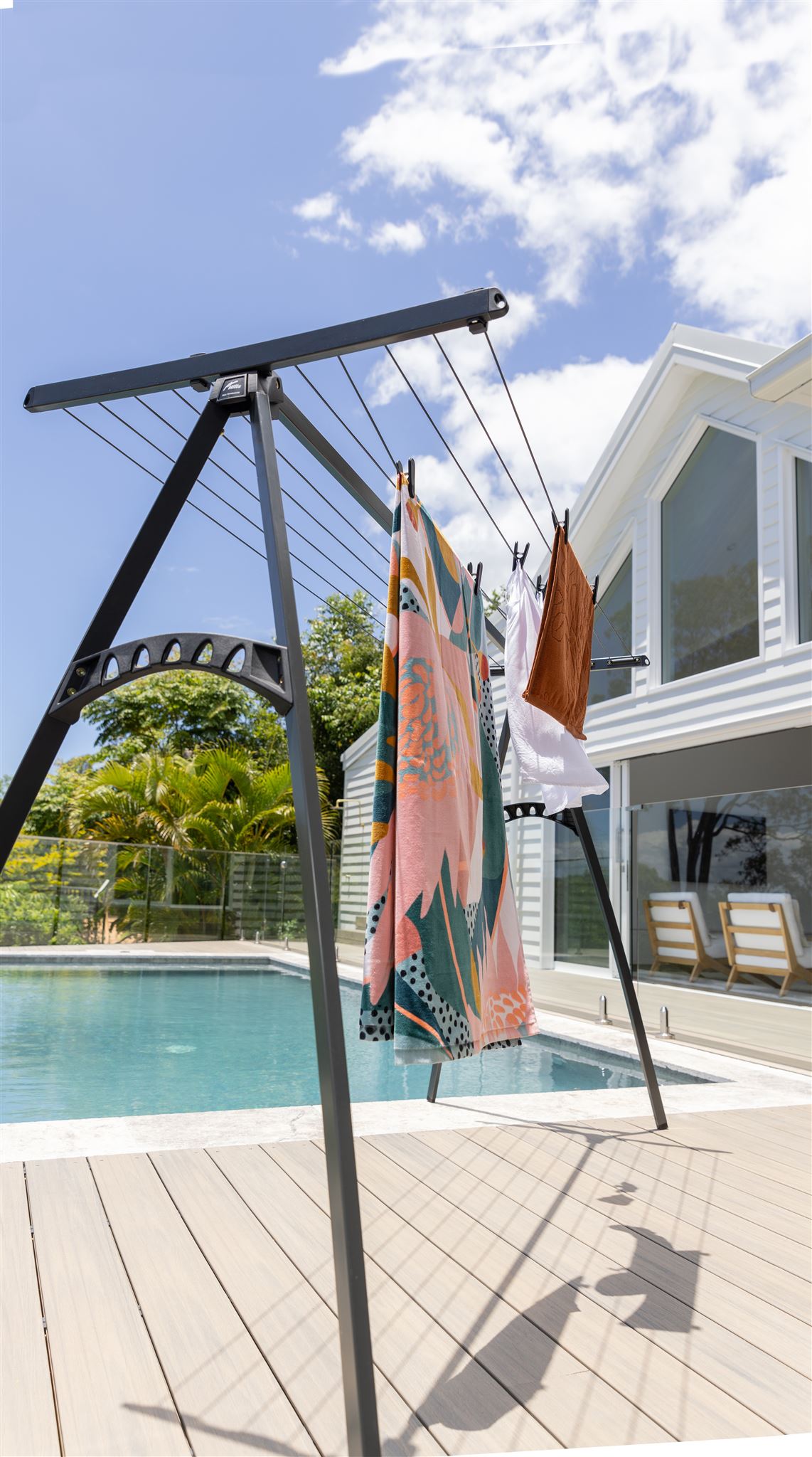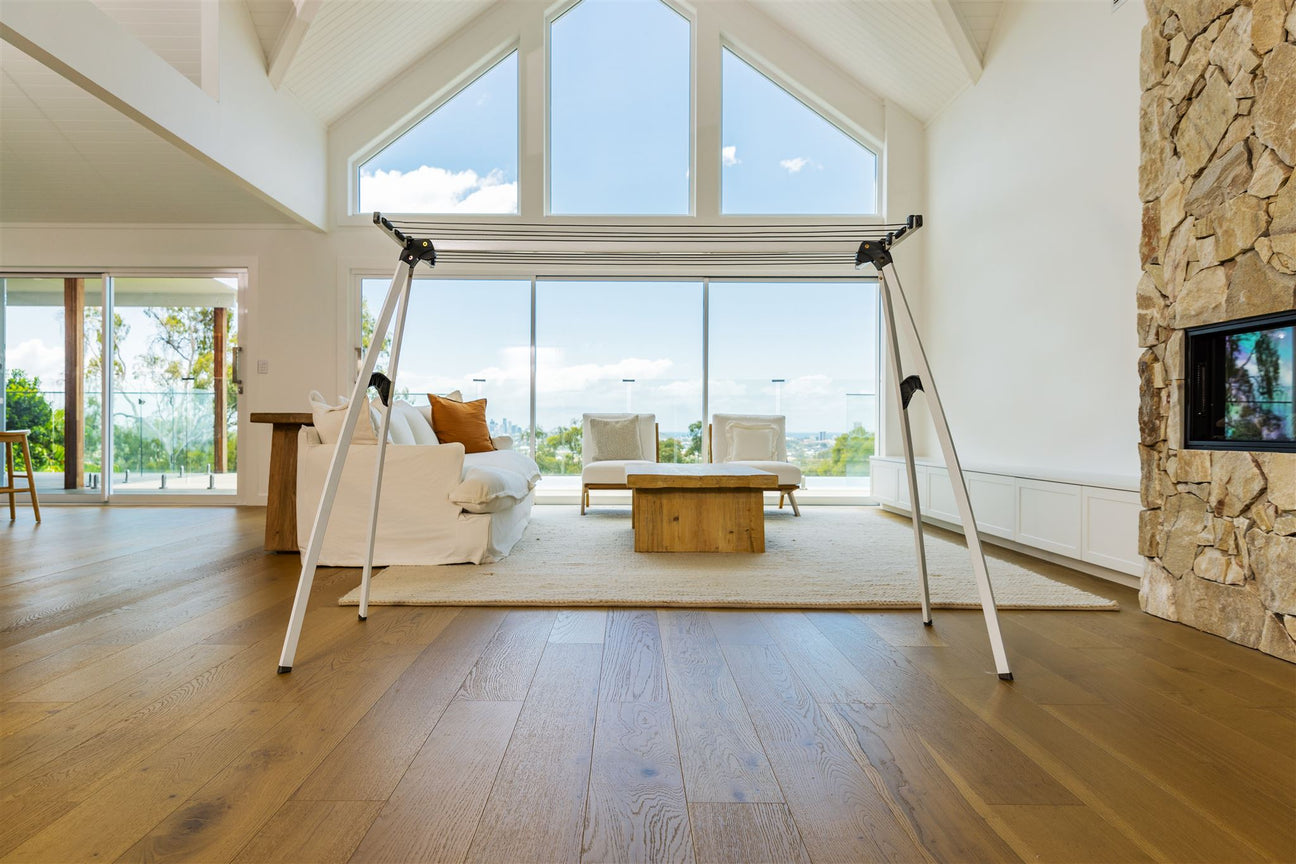Eco-Friendly Drying Solutions: The Benefits of Hills Portable Clothesline for Modern Homes
Jun 3
In our electricity-dependent society, many households have forgotten the simple effectiveness of air drying laundry. Electric tumble dryers consume significant amounts of energy, contributing to household carbon footprints and increasing utility bills. The average electric dryer uses between 2-6 kWh of energy per cycle, adding up to hundreds of pounds on annual energy costs.
The return to traditional air drying methods represents a practical approach to sustainable living. Modern products like the Hills Portable Clothesline offer an updated take on a time-tested practice, making it accessible for contemporary homes with limited space. These innovative solutions provide the benefits of sun-dried clothing without the permanence or space requirements of traditional washing lines, fitting perfectly into our changing living situations and environmental awareness.
The return to traditional air drying methods represents a practical approach to sustainable living. Modern products like the Hills Portable Clothesline offer an updated take on a time-tested practice, making it accessible for contemporary homes with limited space. These innovative solutions provide the benefits of sun-dried clothing without the permanence or space requirements of traditional washing lines, fitting perfectly into our changing living situations and environmental awareness.

Environmental Impact
Electric dryers rank among the most energy-hungry household appliances, consuming approximately 1,800-5,000 watts per use. This energy consumption translates to approximately 4% of a typical home's energy use and carbon emissions. By switching to a hills portable clothesline https://www.aussieclotheslines.com.au/collections/hills-portable-clothes-line, households can reduce their carbon emissions by up to 2,400 pounds annually, creating a substantial positive environmental impact.
Beyond energy savings, air-dried clothes last longer. The heat and tumbling action of dryers cause fabric wear, stretching, and shrinkage. Natural drying prevents this damage, extending clothing lifespan and reducing the environmental burden of textile production.
Space-Saving Design
Modern homes and apartments often lack the outdoor space needed for permanent drying solutions. The Hills Portable Clothesline addresses this limitation with its compact, foldable design. When not in use, these clotheslines collapse to a fraction of their extended size, fitting into cupboards, behind doors, or in storage closets without demanding dedicated space.
The versatility of portable clotheslines makes them suitable for various living situations. Urban apartment dwellers can set them up on balconies or patios, while house owners might use them to supplement existing drying arrangements. The adjustable nature of these products allows users to configure them according to specific space constraints, making air drying accessible regardless of property size. This adaptability proves particularly valuable in the UK, where varying weather conditions and limited outdoor space often present challenges for laundry drying.
Economic Benefits
The financial advantages of switching to portable clotheslines prove substantial over time. Electric dryers typically cost £0.50-£1 per load to operate, adding up to £100-£200 annually based on average household laundry frequency. A Hills Portable Clothesline represents a one-time investment of approximately £30-£120, depending on the model and size, yielding a complete return on investment within months.
Beyond direct energy savings, air drying extends clothing lifespan. The reduced wear means less frequent replacements, translating to clothing budget reductions. Additionally, air-dried fabrics require less ironing as the natural hang-drying process allows gravity to remove many wrinkles. This saves further electricity and time spent on laundry maintenance. For a typical family of four, these combined savings can amount to £300-£500 annually – a significant sum that accumulates meaningfully over years of household management.
Electric dryers rank among the most energy-hungry household appliances, consuming approximately 1,800-5,000 watts per use. This energy consumption translates to approximately 4% of a typical home's energy use and carbon emissions. By switching to a hills portable clothesline https://www.aussieclotheslines.com.au/collections/hills-portable-clothes-line, households can reduce their carbon emissions by up to 2,400 pounds annually, creating a substantial positive environmental impact.
Beyond energy savings, air-dried clothes last longer. The heat and tumbling action of dryers cause fabric wear, stretching, and shrinkage. Natural drying prevents this damage, extending clothing lifespan and reducing the environmental burden of textile production.
Space-Saving Design
Modern homes and apartments often lack the outdoor space needed for permanent drying solutions. The Hills Portable Clothesline addresses this limitation with its compact, foldable design. When not in use, these clotheslines collapse to a fraction of their extended size, fitting into cupboards, behind doors, or in storage closets without demanding dedicated space.
The versatility of portable clotheslines makes them suitable for various living situations. Urban apartment dwellers can set them up on balconies or patios, while house owners might use them to supplement existing drying arrangements. The adjustable nature of these products allows users to configure them according to specific space constraints, making air drying accessible regardless of property size. This adaptability proves particularly valuable in the UK, where varying weather conditions and limited outdoor space often present challenges for laundry drying.
Economic Benefits
The financial advantages of switching to portable clotheslines prove substantial over time. Electric dryers typically cost £0.50-£1 per load to operate, adding up to £100-£200 annually based on average household laundry frequency. A Hills Portable Clothesline represents a one-time investment of approximately £30-£120, depending on the model and size, yielding a complete return on investment within months.
Beyond direct energy savings, air drying extends clothing lifespan. The reduced wear means less frequent replacements, translating to clothing budget reductions. Additionally, air-dried fabrics require less ironing as the natural hang-drying process allows gravity to remove many wrinkles. This saves further electricity and time spent on laundry maintenance. For a typical family of four, these combined savings can amount to £300-£500 annually – a significant sum that accumulates meaningfully over years of household management.

Practical Features
The Hills brand has established itself through thoughtful design elements that address common user frustrations with traditional drying methods. Their portable clotheslines feature rust-resistant frames, typically constructed from lightweight yet durable aluminium or treated steel. This construction ensures the product withstands outdoor conditions without deteriorating or becoming unwieldy to move.
The drying capacity deserves particular attention, with most models offering 12-20 metres of line space – enough for an average washing machine load. Advanced models include features like adjustable height mechanisms, allowing users to accommodate longer items like sheets or curtains. The tension systems maintain line tightness even under the weight of wet laundry, preventing clothes from sagging onto dirty surfaces. These practical considerations demonstrate how contemporary clothesline design has evolved to meet modern expectations for convenience while maintaining the core benefits of traditional air drying.
Conclusion
Portable clotheslines represent more than just a utility item; they symbolise a conscious shift toward sustainable household management. By incorporating simple solutions like the Hills Portable Clothesline into daily routines, households make meaningful contributions to environmental preservation while enjoying tangible benefits in clothing care and financial savings.
The beauty of this approach lies in its simplicity. Unlike many ecological changes that require significant adjustment or sacrifice, switching to air drying offers immediate rewards without compromising convenience. The fresh scent of sun-dried laundry, the extended lifespan of favourite garments, and the satisfaction of reduced energy bills create positive reinforcement for this sustainable choice. As we face increasing environmental challenges, these small but consistent household decisions collectively create significant positive impact, demonstrating how traditional wisdom often offers the most elegant solutions to contemporary problems.
The beauty of this approach lies in its simplicity. Unlike many ecological changes that require significant adjustment or sacrifice, switching to air drying offers immediate rewards without compromising convenience. The fresh scent of sun-dried laundry, the extended lifespan of favourite garments, and the satisfaction of reduced energy bills create positive reinforcement for this sustainable choice. As we face increasing environmental challenges, these small but consistent household decisions collectively create significant positive impact, demonstrating how traditional wisdom often offers the most elegant solutions to contemporary problems.
